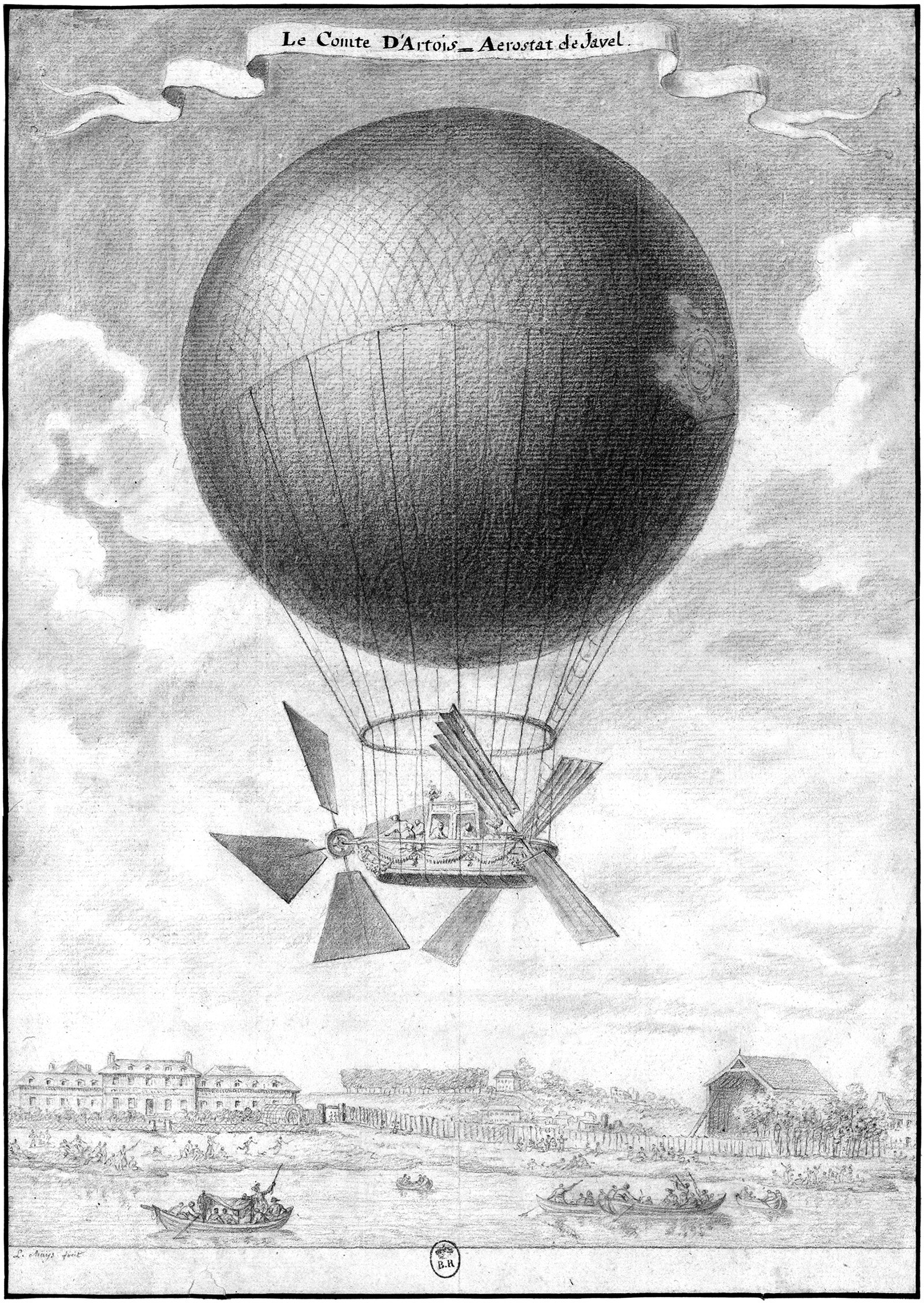Alban & Vallet’s Comte d’Artois
Illustration of Alban & Vallet’s Comte d-Artois, or The Count of Artois. It was a hydrogen-filled balloon designed at Javel, France in 1785.
Pictured above is a design for a flying machine by Léonard Alban and Mathieu Vallet from 1785. Alban and Vallet were both French chemists from the same small town of Pont de Veyle. They both had an interest in ballooning, and they got their start when Vallet invented a small machine that quickly inflated a balloon, greatly reducing previous inflation times. At the time, both were working as directors of a chemical factory in Javel, a neighborhood in Paris. Vallet’s inflating machine gained attention after it was used by the Montgolfier Brothers in 1783 and Jean-Pierre Blanchard in 1784. It wasn’t long after this that the pair designed their own balloon, called Comte d-Artois, or l'Aérostat de Javel.
Pictured above, the Comte d-Artois had a helium-filled balloon which carried a gondola. At one end of the gondola was a large propeller and at the other end was a pair of paddles. The gondola could comfortably seat four people and resembled a shallow boat.
Throughout 1785, Alban and Vallet made many successful flights around Paris. They also made three notable advancements in ballooning technology during that time. The first was a double meshing system of rope that could hold the balloon and prevent it from overinflating due to temperature. The second was a system of paddles for steering, which were mainly used during horizontal flight. The third was an anemometer, which is a device that measures the speed of air or wind. This was used to measure the speed of the craft while in flight.
A design for a flying machine by Alban & Vallet called Comte d-Artois, or The Count of Artois. it was designed at Javelle, France in 1785.
Pictured here is a second illustration of the Comte d-Atrois. In this version there appears to be two propellers and no paddles, meaning this must’ve been an earlier version of the design. The gondola is also less-detailed than first version shown, and it resembles a circus cage with all the vertical bars around it. This is an interesting pair of illustrations because together they show the evolution of the design over time. This second version feels a bit undercooked, and it looks more like a schematic drawing than a complete design. The first illustration, on the other hand, looks polished and finished, and the composition is more complete, with a river and countryside below the craft. This goes to show that flying machines such as this are always works-in-progress, and they’re constantly being refined and improved by their designers.
Read more about other ideas for flying machines here.


